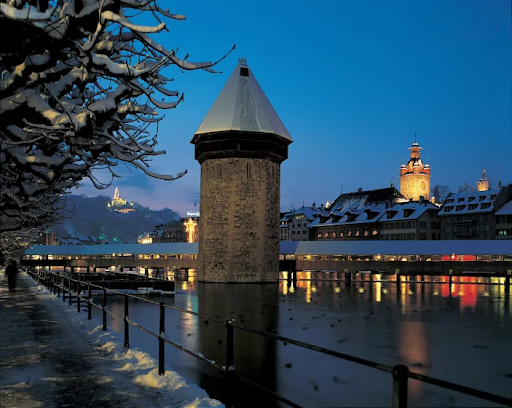Chapel Bridge and Water Tower

Overview
Lucerne is renowned for its Chapel Bridge (Kapellbrücke), which is not only one of the city’s most iconic landmarks but also Europe’s oldest covered wooden bridge. Built in 1332 as part of the city’s fortifications, the bridge connects the New Town on the southern side of the Reuss River to the medieval Old Town, and offers picturesque views as it passes the Water Tower. The Chapel Bridge was originally constructed to protect the city and was later adorned in the 17th century with pictorial panels that illustrate key scenes from Swiss and Lucerne's history, including depictions of St. Leodegar and St. Maurice, the city’s patron saints. Another notable landmark is Lucerne’s Water Tower. Standing at over 34 meters (111.5 feet) tall, this octagonal structure was built around 1300 as part of the city's medieval defenses. Over time, it served various purposes, including as an archive, treasury, prison, and even a torture chamber. Today, the tower houses the Lucerne Artillery Association, while a colony of Alpine Swifts has taken up residence under its roof. Every year, these birds return from Africa, signaling the arrival of spring in Lucerne. At the outflow of the Reuss River, a historic needle dam, constructed in 1860, regulates the water level of Lake Lucerne, ensuring the smooth flow of the river. Near the dam, Lucerne’s Old Town boasts architectural gems such as the Town Hall from the Late Renaissance period and the Jesuit Church, Switzerland's oldest Baroque church, further adding to the city’s rich historical and cultural heritage.